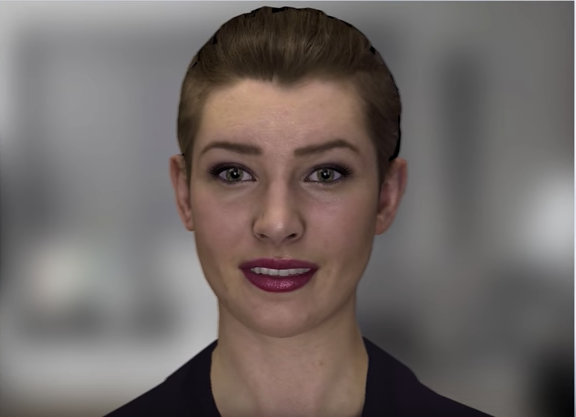National Disability Agency looks outside Watson for Nadia AI bot


The NDIS virtual assistant, Nadia
The National Disability Insurance Agency (NDIA) first announced the development of its virtual assistant Nadia in February, touted as providing National Disability Insurance Scheme (NDIS) participants with a better service.
Although Department of Human Services (DHS) CIO Gary Sterrenberg believes Nadia presents a lot of promise to the agency as well as the scheme's participants, he refused to give Senate Estimates a projected go-live date.
Addressing Estimates on Wednesday, Sterrenberg explained there was hold up with Nadia, which included IBM's Watson cognitive intelligence platform, in particular its voice streaming capabilities.
Aiming for a human-like interaction, Sterrenberg said that with the first version of the bot it had to wait until the user stopped talking before taking the data, converting it to text, and then sending it to Watson before a response could be garnered.
"There was a latency there of about 30 seconds and you can imagine what a poor performance that would be," he said.
"So IBM were working on a streaming technology that allowed it to send the voice as you were talking.
"But as we moved on -- there's a number of platforms that the department is having a look at, IBM is just one of them -- as the technology matures, we'll be making the appropriate decisions about it."
The Human Services CIO said the agency is involved in "ongoing debates" with a number of vendors to make sure the end-to-end experience of Nadia is of a level that does not disadvantage the user. He said otherwise it is likely it would fail.
The cognitive platform is one of 12 technologies the agency is working with for Nadia, with Sterrenberg quick to comment that there are many more options available, some of which the NDIA has already trialled.
"This is the phase we're in at the moment, we want to make sure that the end-to-end experience is human-like if you would, so we don't have the latency between the questions being asked and the answers coming back," he added.
NDIS COO Grant Tidswell echoed Sterrenberg's remarks, but also wants to see the technology assist with NDIS call volume and enquiry load.
Also up for discussion between DHS and the NDIA board is whether Nadia will extend into a kiosk-like experience at physical service centres.
Sterrenberg highlighted five key elements of the bot that important to the NDIA, particularly for the disability sector -- one of which is a natural language interface.
"You can imagine the improved accessibility in using technology when you can speak to the technology, like Siri, rather than type -- particularly if you have a disability that doesn't allow you to use your arms in that way," he explained.
Utilising machine learning, Nadia will be able to learn from its interactions and provide better advice as a result. The bot will "speak" in 32 different languages -- including in "Australian" -- and Sterrenberg believes the final Nadia holds a lot of promise.
"The technology itself is not just the visual of the virtual avatar, but it's got significant capabilities to improve the accessibility to those that are more vulnerable," he added. "The promise is huge in terms of access and control and with how you want to interact with a government agency."
He conceded, however, that it is still early days and that there needs to be a lot more testing performed before it can be unleashed on the public, including ensuring it supports staff first.
Australian born actress Cate Blanchett offered her voice to the agency for Nadia, with her "perfect pitch" also used at the DHS call centre.
The NDIS began its national rollout on July 1, 2016, expected to provide all Australians under the age of 65 who have a permanent and significant disability with "reasonable and necessary" financial support.
In August, the federal opposition had called for a review into the disruptions the payments system had faced over its first few weeks in operation.
Such disruptions included the inability to upload provider data to the online MyPlace portal -- where those enrolled in the NDIS arrange bookings and services with providers and is also the location for submitting payment requests -- which Labor said resulted in delays to payments being issued by the agency, and multiple concerns being expressed by providers and participants.
By September, PwC had published the results of its review which found the federal government was under-resourced and underprepared in rolling out the scheme, resulting in a number of disruptions to the portal including delays in payments being issued to service providers and those with a disability.
The NDIS IT solution was built using DHS' existing IT systems in an attempt to maximise reuse of existing government capabilities.